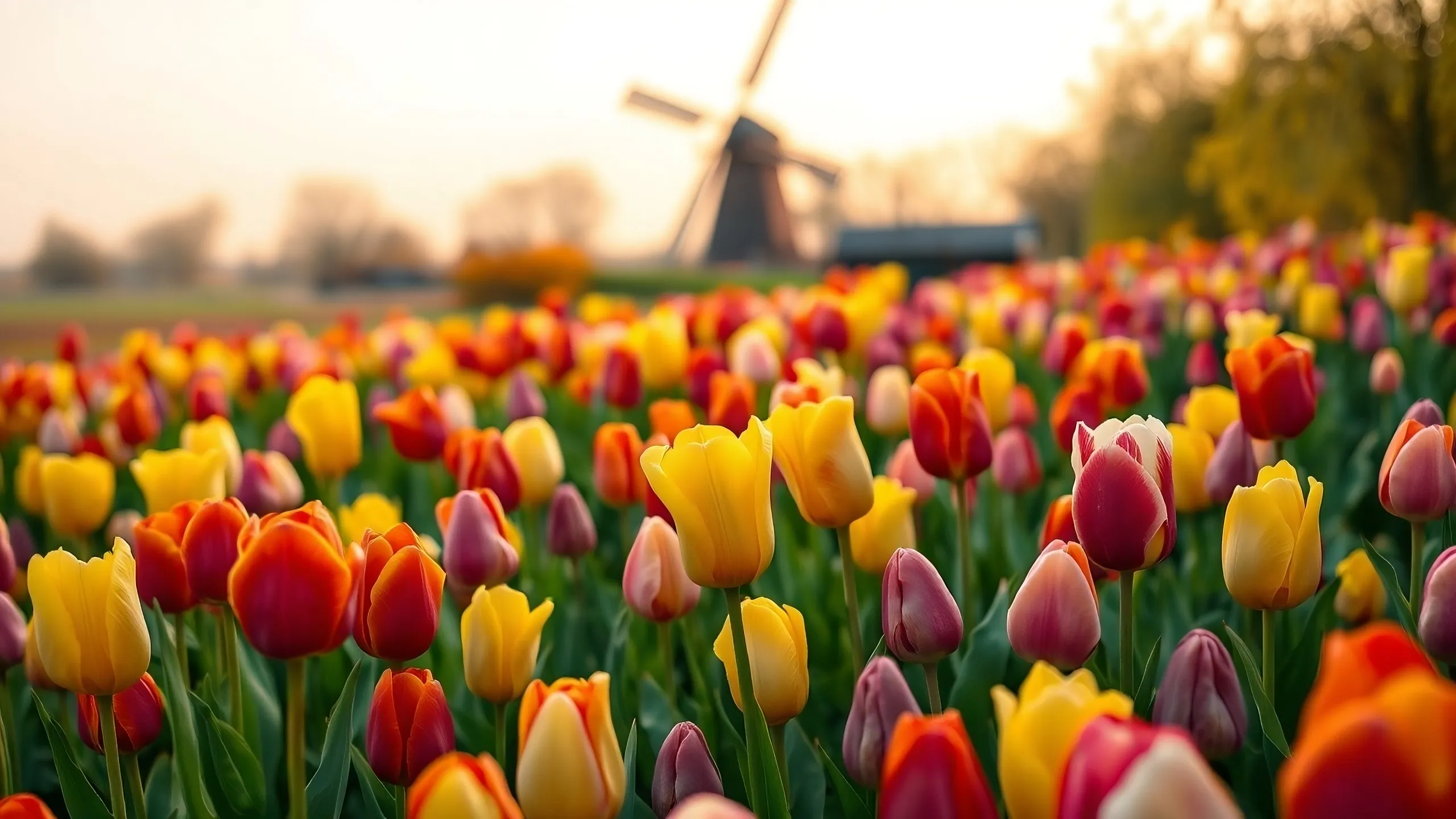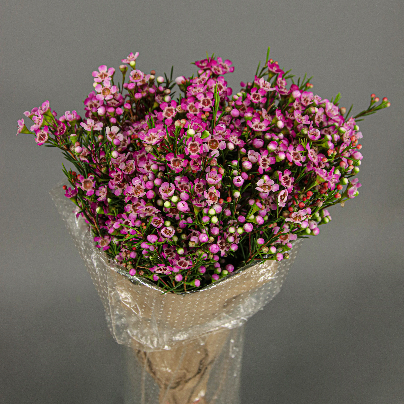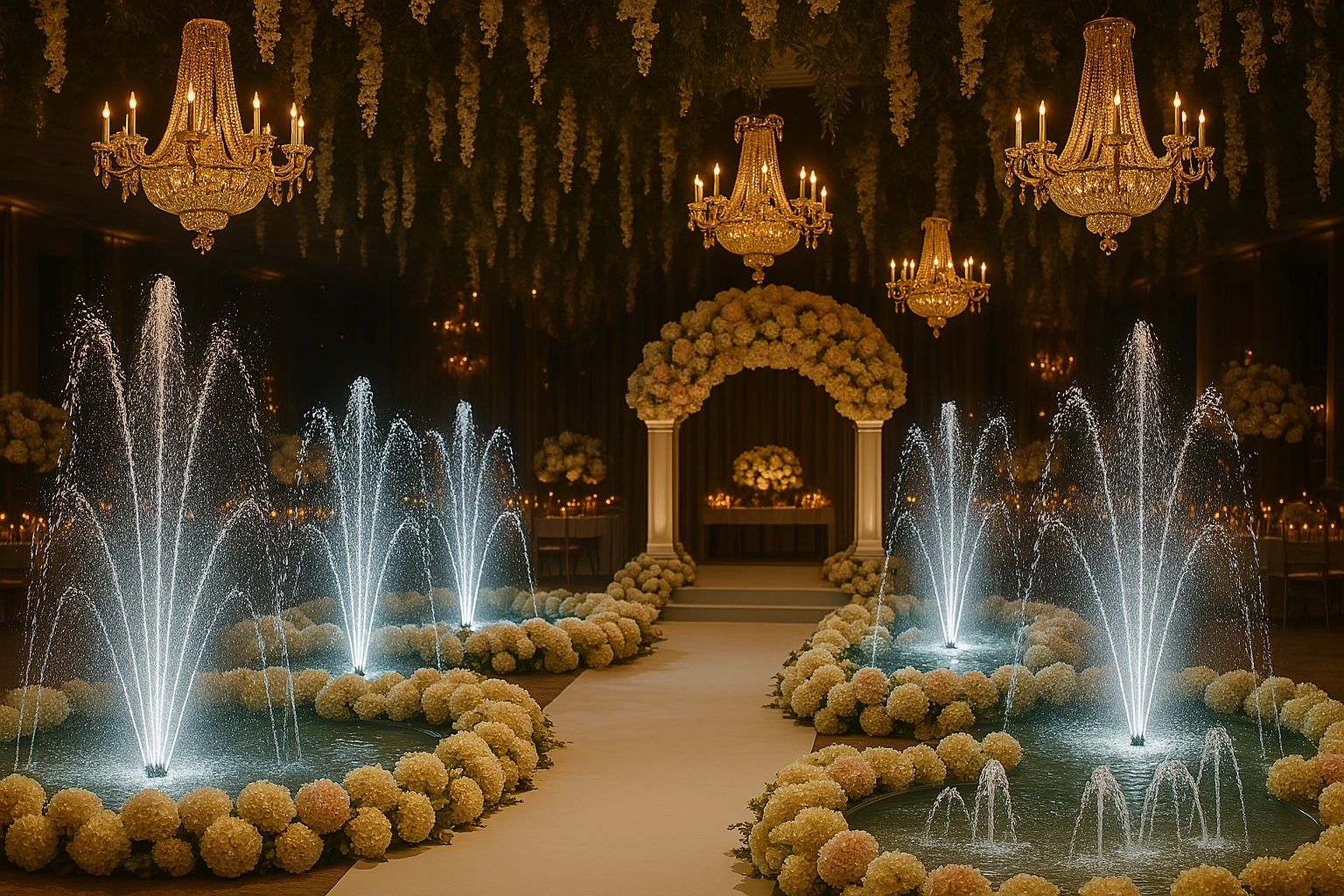Everything about tulips: History, varieties, cultivation and importance
Did you know that a flower changed the economy of an entire country and is still a favourite in gardens and arrangements? Tulips have a fascinating history, full of intrigue, vibrant colours and meanings that few know. From their origins in distant lands to their place as a symbol of elegance, these flowers hold secrets that will surprise you. If you’ve ever wondered what makes tulips so special, or how to grow them yourself, this article will take you on a unique journey to discover everything you need to know. Don’t miss out!
History and origin: from Asia to Tulipomania
Tulips have not always been the familiar and popular flowers they are today. Their history begins far from the gardens of Europe, in the distant lands of Central Asia and the Ottoman Empire. In these regions, tulips grew wild in the fields and were soon appreciated for their unique beauty and wide range of colours.
It was not until the 16th century that these flowers came to the attention of European traders and botanists. As trade routes expanded, tulip bulbs reached Europe, where they quickly became objects of desire. Countries such as Holland began to cultivate the flowers on a large scale, and the tulip was no longer just an exotic plant, but a symbol of status and refinement.
However the love affair with tulips went much further than expected. In the 17th century, the Netherlands experienced a phenomenon known as ‘Tulipomania’, a period when tulip bulbs were so valuable that they were bought and sold like jewellery. Tulip fever reached such an extreme that some people traded houses and land for a few rare bulbs. Although this economic bubble eventually burst, it left a legacy that lives on: tulips became an emblem of Dutch culture and later a beloved flower around the world.
Today, the sight of a tulip is more than just an appreciation of its beauty. It is to see the trace of centuries of history, of unbridled passions and cultures that have found in this flower more than just petals: a true work of nature’s art.

Tulip varieties and characteristics
Tulips are one of the most popular flowers because of their many colours and shapes. You can find tulips in almost every colour: deep reds, bright yellows, pale pinks, deep purples, pure whites and even combinations of several colours in a single petal. This variety makes them perfect for gardens, bouquets and arrangements.
As well as colour, tulips vary greatly in shape. Some have single, elegant petals, while others have double petals, giving them a fuller and more voluminous appearance. There are also varieties with curled petals or irregular edges, giving them a unique and exotic look. In terms of size, there are smaller tulips, ideal for pots or borders, and taller, sturdier tulips, perfect for the centre of a garden or as the focal point of an arrangement.
Although they are sometimes overlooked, the leaves of the tulip are long and a fresh green colour. As well as complementing the flower, they play an important role in its growth, helping the plant to absorb sunlight and nourish itself properly.
Among the most popular varieties are the Triumph tulip, famous for its hardiness and vibrant colours, and the Darwin tulip, known for its large, showy and late flowering. There are also parrot tulips, which have curled petals and irregular edges, giving them a unique and striking appearance.
With so many options, there is always a perfect tulip for any garden, event or decoration.
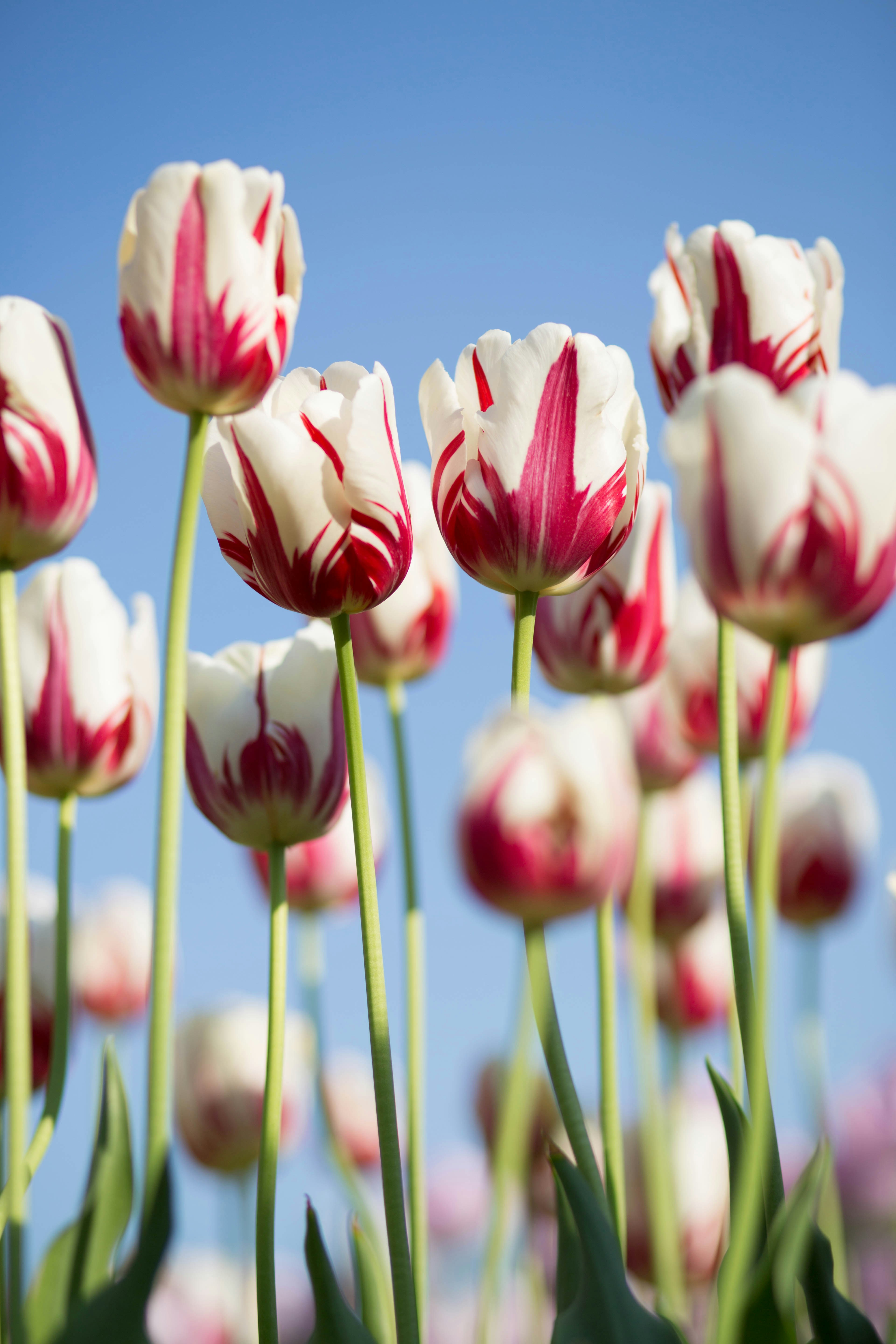
Cultivation and maintenance
Growing tulips is not complicated, but it does require a few basic steps. First, choose a spot where they will get plenty of sunlight. Tulips love the sun, although if you live in a very hot climate, some light shade may be helpful. Make sure the soil is well-drained; they don’t like waterlogged roots. You can mix a little sand into the soil if it retains too much water.
The best time to plant bulbs is usually in autumn. This will give them the cool period they need to flower in the spring. When planting, bury each bulb about 10-15 cm deep with the pointed side up. Leave about 10 cm between each bulb to give them room to grow.
As for watering, tulips need water, but not too much. Water after planting and then moderately as they grow. When they start to leaf out, you can feed them with a bulb specific nutrient or a general flower food. This will give them a boost to produce larger flowers.
As they grow, keep the area free of weeds. Don’t touch the leaves while they are green, as they help the plant gather energy for next year. If you ever notice the flowers wilting or looking weak, cut them off, but leave the leaves until they dry out completely.
Eventually, after flowering, you can dig up the bulbs if you want to store them or simply leave them in the ground to flower next year. By following these simple tips you will have healthy, beautiful tulips that will fill your garden with colour.

Meaning and symbolism of tulips
Tulips are also remarkable for the special meaning they have acquired over the centuries. In their country of origin, the Netherlands, tulips are a symbol of elegance and national pride. The so-called ‘tulip mania’ of the 17th century left not only an economic mark, but also a deep love for these flowers, which became a cultural icon.
Each tulip colour also has its own meaning. Red tulips often represent deep and intense love, while yellow tulips evoke happiness and friendship. White tulips are associated with purity and innocence, and pink tulips symbolise affection and admiration. These interpretations make them a popular choice for gifts and floral arrangements for special occasions.
Throughout history, tulips have appeared in many works of art and literature. Famous painters have used them as a symbol of beauty and delicacy, and poets have often spoken of their ephemeral elegance. Although they are simple flowers in appearance, their presence in art and culture has elevated them to more than an ornament and made them a source of inspiration.
Even today, the tulip is still a symbol of good taste, of joy and of love. Whether you see them in a garden, at a wedding or in a vase on a table, tulips always convey a special message that is linked to the emotion and beauty of nature.

Practical uses and applications
Tulips are an excellent choice for bringing life and colour to different spaces, and their versatility makes them a valuable resource for any design or decoration professional. In interiors, for example, an arrangement of tulips can bring freshness and elegance to communal areas such as waiting rooms, receptions or dining rooms. One key is to use simple vases that allow the flowers to take centre stage, choosing colours that complement the room’s palette. This creates a visual impact without overpowering the surroundings.
Outdoors, tulips can frame entrances, patios or paths, helping to create focal points that draw the eye. Plant them in large groups or combine them with background perennials for a more textured effect. If the space is open to the public, such as in a hotel or restaurant, choose long-flowering or staggered varieties to maintain an attractive appearance for longer.
When working with cut tulips, it is essential to cut the stems diagonally before placing them in water and to change the water regularly. This will not only prolong the life of the flowers, but will also maintain the aesthetics that are essential in any professional environment. It is also important to place arrangements away from sources of heat or draughts to ensure they stay fresh for longer.
In gardens or outdoor public spaces such as parks or commercial courtyards, it is advisable to plant tulips in areas with good drainage and sunlight. This not only ensures healthy growth, but also reduces the amount of maintenance required, which will be appreciated by customers or end users.
With some basic care and strategic placement, these flowers can transform an environment and leave a memorable impression.
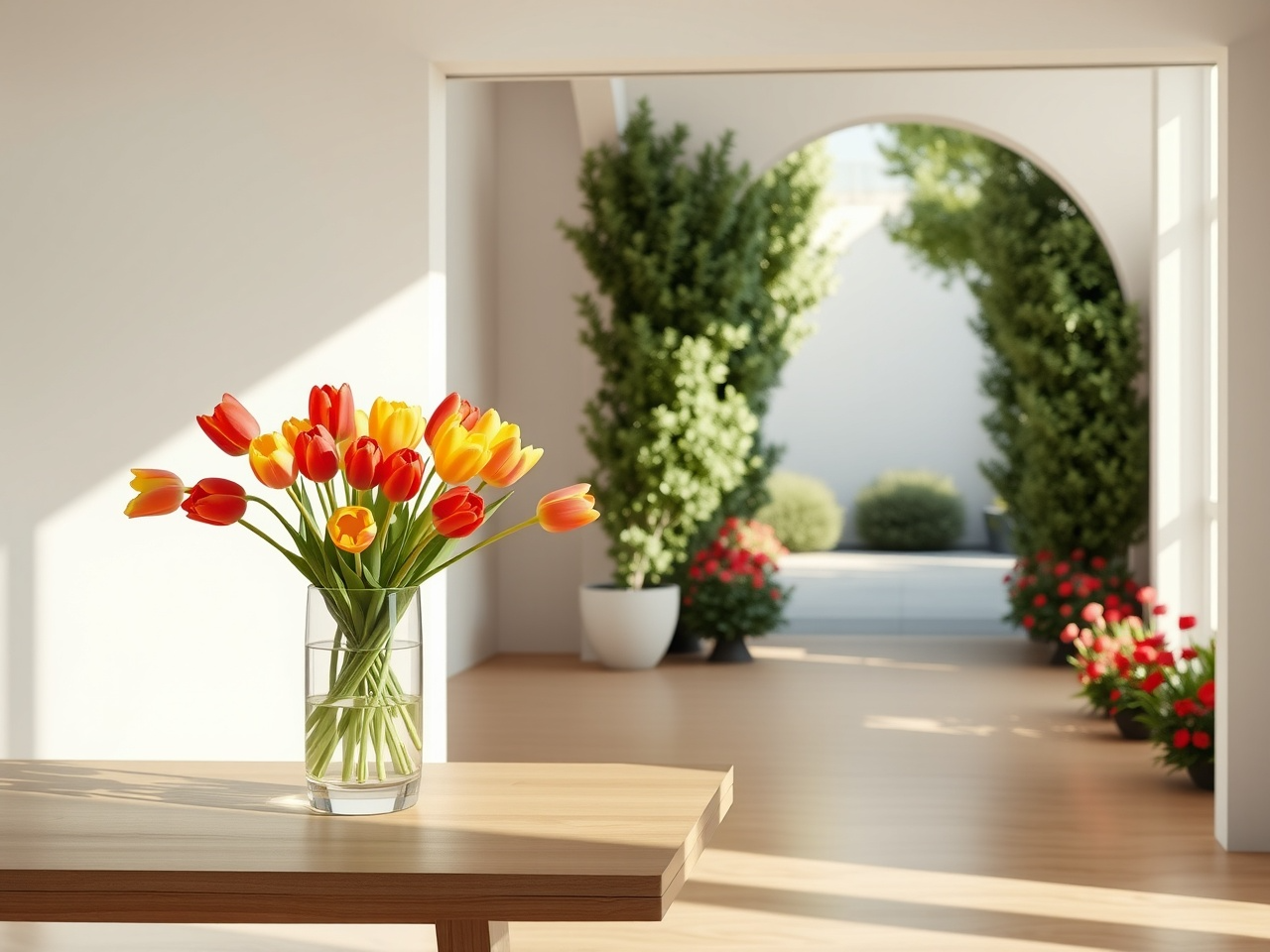
Curious facts about tulips
Tulips not only have a fascinating history, they are also surrounded by curiosities and legends that make them even more interesting.
As far as botanical curiosities go, few people know that tulips have the ability to continue to grow even after they have been cut. So if you put them in a vase, you will see that they can stretch and change position slightly over time.
Tulips have also been a source of inspiration for artists and poets throughout history. Famous paintings from the Dutch Golden Age often include them as a symbol of ephemeral beauty, and in literature they are mentioned as a reminder of how precious, but fleeting, the beautiful things in life can be.
Tulips have a deep history and the beliefs surrounding them make them flowers full of charm and mystery.

Tulip buying guide and tips
The ideal time to buy tulips is from January to June, with March to May offering the widest variety and best quality. During these months the colours are vibrant and there are many options to choose from, from plain tulips to more exotic ones.
In general, prices are fairly stable and depend more on demand. For example, around holidays or special events, prices may rise slightly, but there are usually no major availability problems as with other flowers.
Outside the main season, the choice narrows a little. Single tulips and some double tulips are more common, while the more special varieties such as Parrot or Fringed are less common. In addition, the colours tend to be less intense and in some cases a little pale, although they are still a good choice.
The most common types of tulips are single, double, fringed (with irregular edges), parrot (with curled petals), coronet and lily (more elongated and elegant shape). Each has its own charm and the choice depends on the style you want to achieve.
If you can, buy in high season to ensure better quality and a wider range of colours. However, if you need tulips out of season, you will still find good, albeit more limited, options.
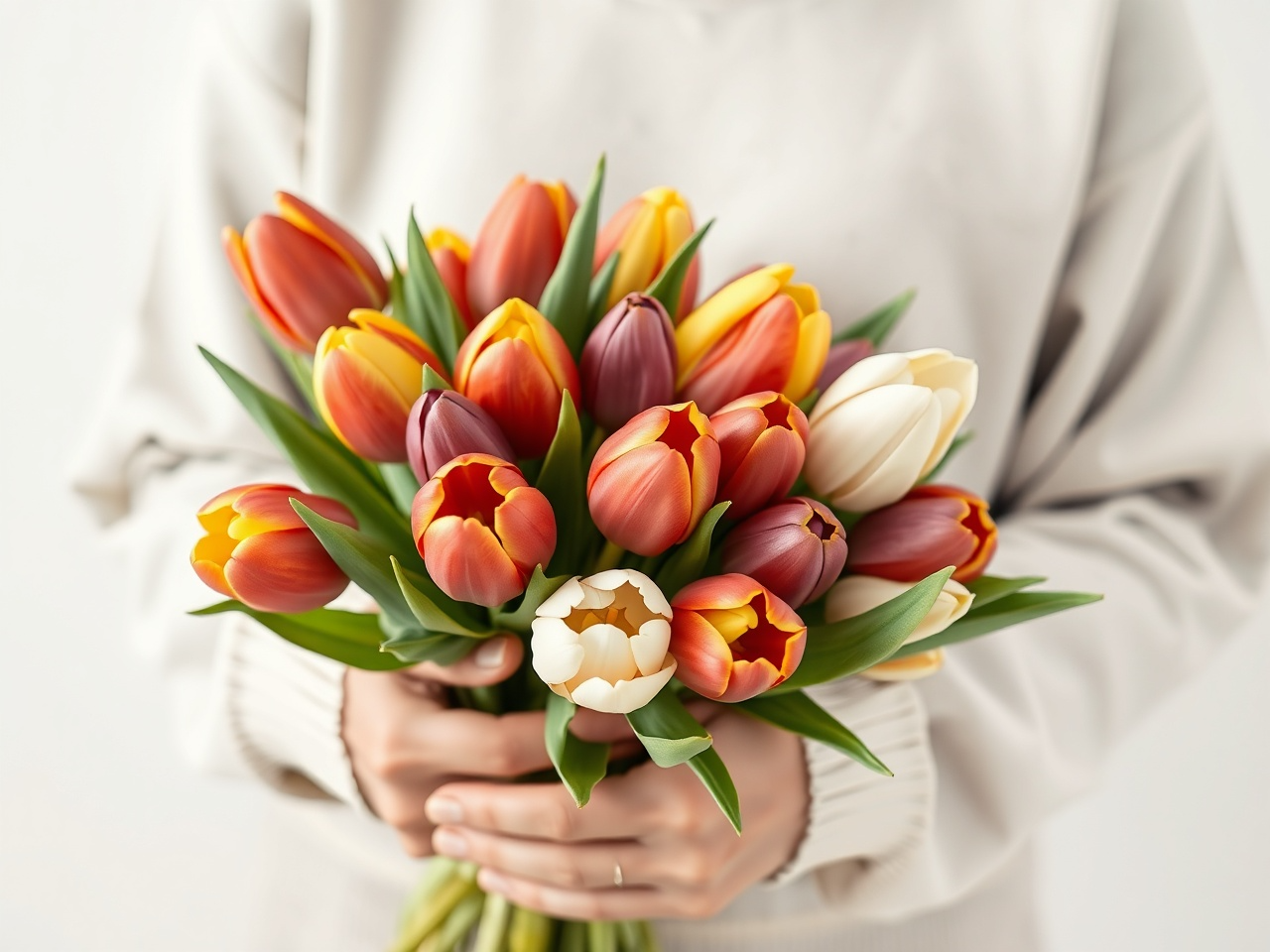
Advice for professionals
When planning arrangements or decorations, it is worth suggesting the types of tulips that best suit the style and purpose of the space. For example, single or double tulips can be ideal for a classic and elegant design, while Parrot or Fringed tulips add a unique and eye-catching touch, perfect for more creative or informal events.
Finally, don’t forget that aftercare is key. Educating end customers about best storage and care practices – such as keeping tulips in a cool place, changing water regularly and cutting stems diagonally – can make all the difference. This will ensure that the flowers stay fresh and beautiful for longer, resulting in happier customers and longer-lasting results.
Conclusion: Flowers that Speak to the Heart
Tulips are much more than flowers: they are symbols of history, art and emotion. From their fascinating origins to their ability to transform spaces, these plants offer an incomparable wealth. Whether grown, purchased or simply enjoyed in a bouquet, they become a bridge between nature and our senses, reminding us that beauty is found in simple, ephemeral things.
